Are you torn between buying a new or used vehicle? You’re not alone—many buyers face this dilemma. In this post, I’ll break down the pros and cons of both options, looking closely at cost savings, auto insurance factors, and the benefits of brand-new features. By the end, you’ll have a clearer understanding of how to make an informed decision that suits your budget and needs, helping you avoid unexpected expenses and gain the best value for your cash. Let’s dive in and simplify this important choice together!
Key Takeaways
- Assess your driving needs before deciding between a new or used car
- Evaluate long-term costs, including maintenance, insurance, and financing options
- Consider the impact of depreciation when choosing your vehicle
- Look into certified pre-owned programs for added warranties and peace of mind
- Always test drive and inspect vehicles thoroughly before making a purchase
Evaluating the Pros and Cons of New vs Used Cars

When weighing the decision between new and used cars, I find it helpful to first assess my driving needs and preferences. It’s crucial to consider initial costs like down payments and the interest rates I might face with car finance. Long-term value, including depreciation, also plays a significant role, especially if I’m looking at a luxury car. Lastly, I always explore warranty and maintenance factors to ensure I’m making a sound investment. Each of these elements shapes my choice and can guide you toward the best vehicle for your lifestyle.
Assessing Your Driving Needs and Preferences
When I’m considering whether to buy a new or used car, I start by evaluating my specific driving needs. Factors like how often I’ll be on the road, the types of trips I typically make, and how many passengers I need to accommodate all play a role. For instance, if I have a long daily commute, investing in a reliable used car with good fuel efficiency could save me money on both fuel and cheap auto insurance compared to a new vehicle.
Additionally, I think about my financial options. Should I lease for lower monthly payments, or would financing a used car be a better long-term investment? Both choices have their pros and cons, especially in terms of warranties and maintenance. It’s essential to consider expenses related to brakes, tires, and oil changes, as these will affect my budget over time. The information provided by the Federal Trade Commission can help me navigate my options more effectively, ensuring I make a well-informed decision.
- Assess driving needs: commute, trips, and passenger capacity.
- Evaluate financial options: leasing vs. financing.
- Consider long-term costs: maintenance, brakes, and insurance.
Weighing the Initial Costs
When I think about the initial costs of buying a car, it’s essential to examine the total price of ownership. New cars often come with higher purchase prices and, potentially, elevated monthly payments due to their increased value. Additionally, I’ve found that factors such as my credit score can significantly affect financing options, impacting the interest rates offered on my contract. This can further shape my decision, as lower rates can make a new car more affordable in the long run.
On the other hand, buying a used car usually means lower upfront costs, which is appealing if I’m working with a tight budget. I always consider how the price of insurance policies might differ between new and used vehicles. Generally, used cars cost less to insure, which contributes to the overall savings. Assessing these factors helps me to determine what fits best within my budget and aligns with my long-term financial goals:
- Evaluate total price of ownership.
- Consider the impact of credit score on financing.
- Analyze differences in insurance policies.
- Weigh the pros and cons of higher versus lower upfront costs.
Considering Long-Term Value and Depreciation
When I think about long-term value and depreciation, it’s clear that new cars tend to lose value much faster than used ones. On average, a new car can depreciate by about 20% within the first year. That means if I’m financing a new vehicle through a credit union, I could end up owing more on my loan than what the car is worth shortly after driving off the lot. This rapid depreciation is something I always keep in mind, especially as I evaluate how much I’ll retain if I decide to sell or trade it in later.
With used cars, the depreciation has already happened to a significant extent, which often allows me to get more value for my dollars spent. Plus, I generally find that insurance costs are lower for used vehicles, adding to my savings over time. I also have to consider factors like potential repair needs; sometimes, I hear horror stories of “lemon” cars, but with thorough research, I can find a reliable used option that fits my budget and doesn’t leave me with hidden costs, making it a practical choice in the long run.
Exploring Warranty and Maintenance Factors
When I consider the warranty and maintenance factors of new versus used cars, I notice that new cars generally come with comprehensive warranties, often including options like roadside assistance. This added peace of mind helps mitigate some risk; if anything goes wrong, I know that I won’t be stuck with a hefty repair bill. On the other hand, used cars usually have limited or expired warranties, which means I need to be more proactive about maintenance. This is where having a savings account specifically for car-related expenses can be beneficial, allowing me to prepare for potential repairs without financial strain.
Moreover, I’ve learned that the depreciation rate significantly affects the long-term value of my purchase, especially when it comes to maintenance. New cars depreciate quickly, meaning they might lose value faster than I can save for their upkeep. In contrast, a carefully chosen used car can offer considerable savings in depreciation while still being a reliable option. By selecting a well-reviewed used vehicle, I can enjoy benefits like lower insurance rates and fewer maintenance issues, ultimately guiding me toward making a practical choice that fits my budget.
Choosing between new and used cars shapes your path. Next, we’ll look at the financial implications of buying new cars to see how they impact your wallet.
Financial Implications of Buying New Cars
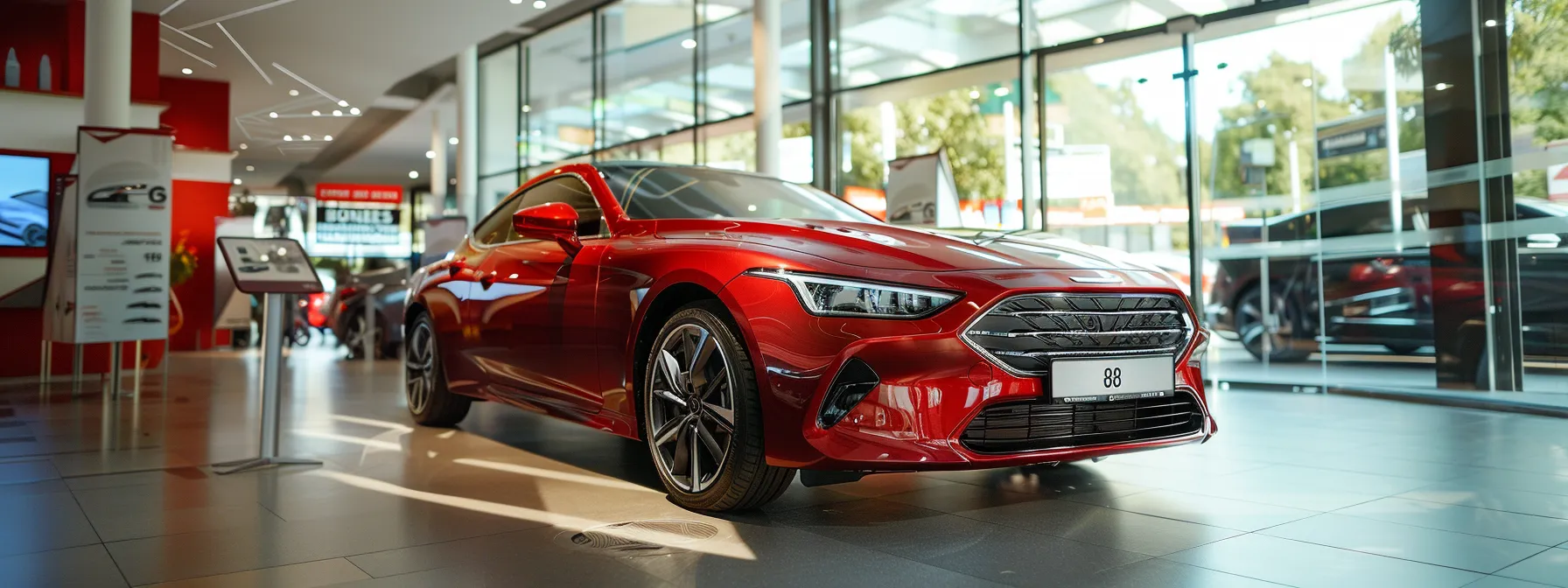
When considering the financial implications of buying new cars, I start by understanding depreciation on new vehicles, which can impact my investment over time. I also explore various financing options and potential incentives that can lessen my overall expenses, alongside calculating insurance costs that might vary due to factors like fuel efficiency and regional sales tax. Finally, I evaluate the resale value potential to gauge how well the car might hold its worth amid inflation. Each of these factors plays a crucial role in making an informed purchasing decision.
Understanding Depreciation on New Vehicles
When I purchase a new vehicle, one of the first things I notice is how quickly it depreciates. On average, a new car can lose about 20% of its value within the first year alone. This rapid depreciation can be a startling expense for car buyers, especially if they’re financing the vehicle through a credit union. If I need to sell or trade it in shortly after buying, I might find myself in a situation where I owe more on my loan than the car is worth.
Understanding this financial impact helps me make a more informed purchase. If I choose a vehicle with a solid warranty, it can provide peace of mind against unexpected repair costs during those initial years. Still, it’s crucial to remember that while new cars can provide reliability and a fresh experience, the expense of depreciation means they might not hold value as well as I would hope when it’s time to move on to my next vehicle.
Exploring Financing Options and Incentives
When exploring financing options for new cars, I often start by evaluating my personal finance situation. Many dealerships offer various financing plans, including low-interest loans and lease arrangements, which can significantly affect my budget. I also make sure to do my research on potential fees associated with these loans, as they can add up over time and impact my overall financial plan.
Additionally, it’s beneficial to look for manufacturer incentives, which might include cashback offers or special financing rates. These promotions can help a consumer like me minimize costs and make a new car purchase more enticing. Being proactive and thorough in my inspection of financing options ensures I not only save money upfront but also set myself up for a more manageable payment plan moving forward:
- Evaluate personal finance and budget constraints.
- Research loans and lease options.
- Check for applicable fees associated with financing.
- Look for manufacturer incentives to lower costs.
Calculating Insurance Costs for New Cars
Calculating insurance costs for new cars is an essential step I take when considering my financial obligations. New vehicles often come with higher insurance premiums due to their replacement value and advanced safety features. This means I need to carefully review different insurance policy options, as my choice can significantly impact my overall monthly budget, especially when combined with my interest rates and potential annual percentage rates for financing.
When looking at insurance for a new car, I also think about the long-term benefits of my decisions. Choosing a new vehicle with a good safety rating can sometimes lead to lower insurance rates. Additionally, if I find that my current insurance policy doesn’t suit my new needs, I can consider refinancing either my auto loan or my insurance for better terms and rates. By being proactive about my insurance costs, I can create a more manageable financial plan.
- New vehicles may have higher insurance premiums.
- Reviewing different insurance policy options is crucial.
- Vehicle safety ratings can lead to lower insurance costs.
- Consider refinancing loans or insurance for better rates.
Evaluating the Resale Value Potential
When I evaluate the resale value potential of new cars, I notice that their initial rapid depreciation often leaves owners in a tough spot, especially if they financed the purchase. For example, if I buy a new vehicle, it can lose around 20% of its value within the first year, potentially leading to debt if I need to sell later. This quick value drop often means that my car isn’t worth as much as I owe, and when I check Reviews on vehicles, I can see how certain models might hold their value better than others.
In contrast, Pre-Owned Cars from trusted sources like Indy Auto Team typically have already undergone their most significant depreciation. As a result, I’m more likely to get a better return when I’m ready to sell. By searching tools like “Find My Car,” I can easily compare various options and see which pre-owned cars have a solid resale potential, providing further peace of mind as I consider my budget and future expenses:
- Understand the percentage of depreciation on new cars.
- Evaluate the resale value based on reviews of different models.
- Consider the advantages of buying pre-owned cars.
- Use resources like Indy Auto Team to make an informed decision.
The costs of new cars weigh heavy, often stretching budgets too thin. Instead, consider the benefits that come with used cars, offering value and freedom without the extra burden.
Advantages of Purchasing Used Cars
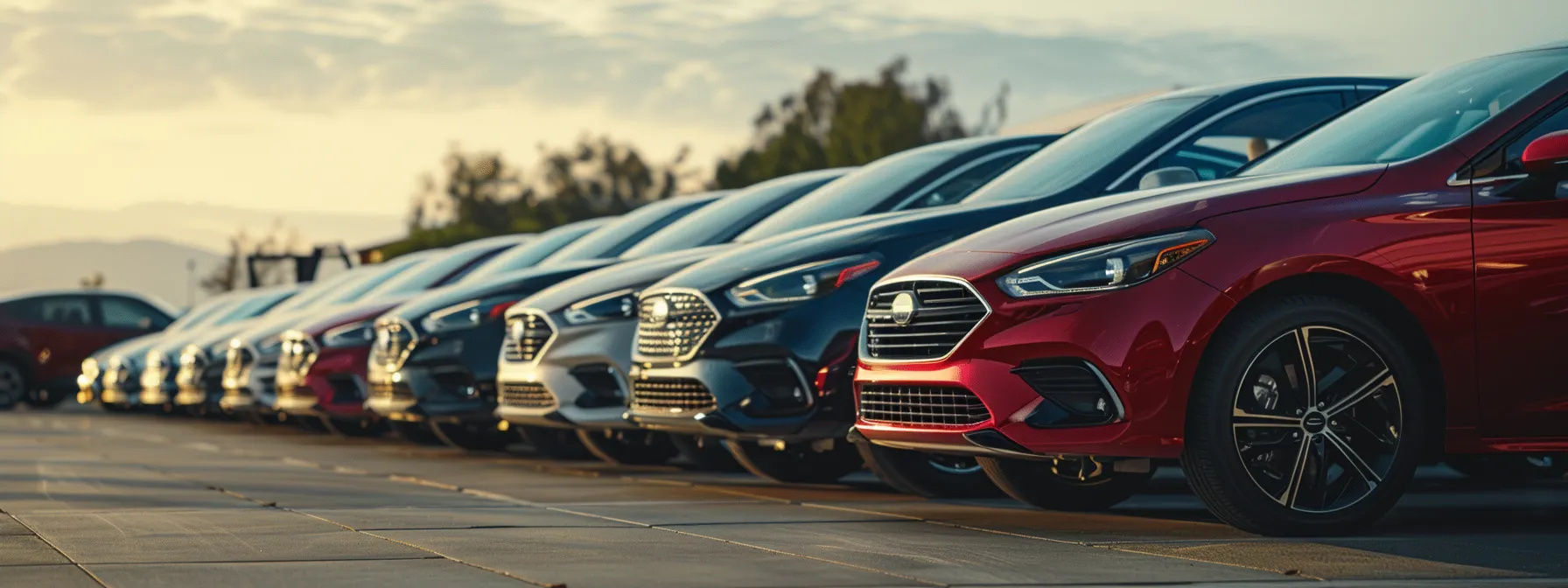
Advantages of Purchasing Used Cars
Purchasing a used car offers several notable benefits that can make it a smart decision. I appreciate the lower purchase prices, allowing me to save money right from the start. Additionally, I avoid the steep depreciation hits that new cars face, ensuring my investment holds better value over time. With a wider range of models and features available, I can find the perfect fit for my needs. Certified Pre-Owned programs also provide peace of mind with added warranties, making used cars a practical option for budget-conscious buyers.
Benefiting From Lower Purchase Prices
One of the most appealing aspects of buying a used car is the lower purchase price. When I search for pre-owned vehicles, I often find that I can get a higher-quality model for a fraction of the price of a new one. This not only helps me stay within my budget but also allows me to afford additional features or upgrades that I might not have considered with a new car.
Additionally, since used cars have already undergone significant depreciation, I feel like I’m making a wise financial decision. For example, buying a reliable, well-reviewed used vehicle means I can avoid the steep drop in value that new cars face in their first year. This way, if I decide to sell or trade it in later, I’m likely to retain more of my investment, making the overall purchase even more appealing.
Avoiding Significant Depreciation Hits
When I choose to buy a used car, one of the biggest advantages I appreciate is avoiding significant depreciation hits. New cars typically lose a large portion of their value—sometimes around 20%—within just the first year of ownership. By purchasing a pre-owned vehicle, I can sidestep this steep decline and enjoy a better investment as the vehicle has already taken its depreciation hit.
This approach not only helps me save money right from the start but also positions me more favorably if I decide to sell later. For instance, I often find that high-quality used cars hold their value better than new ones, especially models known for reliability. This means I can get more for my money and feel confident in my choice, knowing I’ve made a smart financial decision.
Exploring a Wider Range of Models and Features
One of the biggest advantages I’ve noticed while shopping for used cars is the increased availability of various models and features. With a wide selection of pre-owned vehicles, I can explore options that may have been out of my budget if I were looking at new cars. From luxury brands to specialty models, buying used means I can find a car that perfectly fits my lifestyle, whether it’s a spacious SUV for family trips or a compact car for city driving.
In my experience, the pre-owned market often includes special features that were once only available in higher-priced new cars. Often, I discover great deals on well-equipped used vehicles, such as advanced safety systems and premium sound systems. This not only allows me to drive a better vehicle but also enhances my overall car-buying experience, as I get to enjoy the benefits of modern technology without stretching my finances too thin.
Understanding Certified Pre-Owned Programs
Understanding Certified Pre-Owned (CPO) programs is essential when considering a used car, as these programs offer benefits similar to buying new. I find that cars labeled as certified pre-owned have gone through rigorous inspections, ensuring they meet specific quality standards. This makes me feel more confident in my purchase, knowing that I’m getting a reliable vehicle with a warranty that often covers major repairs.
Additionally, CPO programs typically provide benefits like extended warranties, special financing rates, and roadside assistance, which are not always available with non-certified used vehicles. If I’m looking for peace of mind when purchasing a used car, these programs can greatly enhance my buying experience. They allow me to enjoy a like-new vehicle without the hefty price tag often associated with new models:
- Certified vehicles go through extensive inspections.
- CPO programs often include extended warranties.
- Benefits may include special financing offers.
- Roadside assistance is frequently part of the package.
Buying a used car has its clear benefits—the savings are real, and the choices are wide. Yet, just as every rose has its thorns, there are potential drawbacks we should consider before making that purchase.
Potential Drawbacks of Used Cars
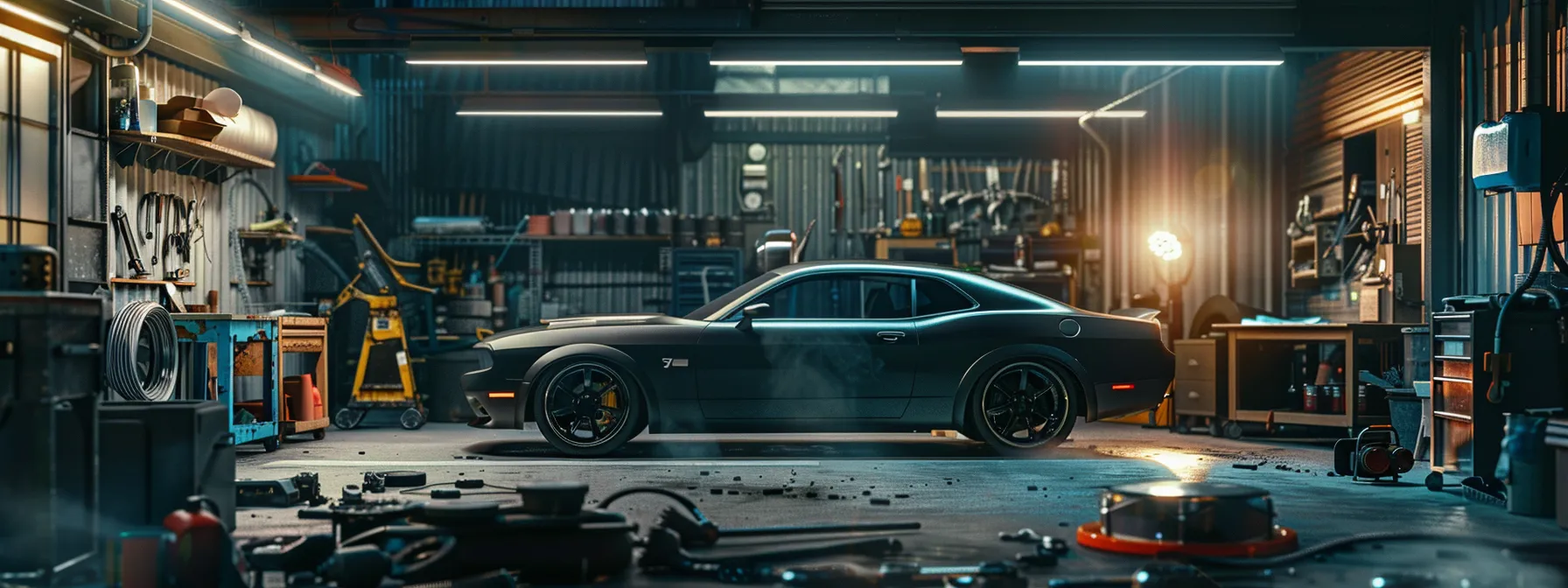
Potential Drawbacks of Used Cars
When considering used cars, it’s important for me to evaluate certain drawbacks that may affect my decision. I assess the potential maintenance and repair risks, keeping in mind that older vehicles might require more attention. I also look at limited or expired warranties, which could leave me responsible for costly repairs. Additionally, I consider the possibility of higher financing rates and take the time to investigate the vehicle’s history and reliability before committing to a purchase. Understanding these factors helps me make a more informed choice.
Assessing Maintenance and Repair Risks
When I consider buying a used car, one of the first things that comes to mind is the potential for maintenance and repair risks. Unlike new vehicles, which often come with comprehensive warranties and maintenance plans, used cars might not have the same coverage. I always make it a point to research the car’s history, including past repairs and any common issues reported for the model. Knowing what to expect can help me gauge whether I might face unexpected repair expenses down the line.
It’s also essential for me to take into account that older cars may require more frequent maintenance than newer ones. As a buyer, I consider factors like the age of the vehicle, its mileage, and any specific repairs that might be needed in the near future. If I’m not prepared for these potential costs, I could end up straining my budget later on. By being proactive and having a reliable mechanic I can consult, I can better manage these risks and ensure I’m making a safe investment in a used vehicle.
Evaluating Limited or Expired Warranties
When considering a used car, one of the major points I focus on is the issue of limited or expired warranties. Unlike new vehicles that typically come with comprehensive warranties, used cars may only have crumbly guarantees or none at all. This lack of coverage means that I am more liable for unexpected repair costs, which could significantly impact my budget in the long run.
To navigate this potential drawback, I always examine the specific warranty status before finalizing a purchase. If the warranty has expired, I take the time to consider purchasing a vehicle service contract, which can provide additional protection for my investment. By understanding the warranty landscape, I can make a more informed choice and avoid unpleasant surprises that might arise after driving my used car home:
- New vehicles usually come with comprehensive warranties.
- Used cars may have limited or expired warranties.
- Repair costs could fall entirely on me without coverage.
- Purchasing a vehicle service contract can offer added protection.
Considering Higher Financing Rates
When I consider financing options for a used car, one of the major drawbacks is that the interest rates can sometimes be higher compared to new vehicles. This can affect my monthly payments and overall budget significantly. New cars often come with special financing deals that make them more appealing, which means I need to be mindful of how much more I could pay in interest over the lifespan of the loan if I go for a used option.
To make an informed choice, I always recommend shopping around for loans and comparing rates from different lenders. A higher interest rate can add up quickly, impacting my total cost and monthly expenses:
- Assess interest rates offered for used cars.
- Compare financing options to find the best deal.
- Consider how interest will affect my budget long-term.
Investigating Vehicle History and Reliability
When I think about buying a used car, one of the first things I focus on is investigating the vehicle‘s history. It’s crucial to know whether the car has been in any accidents or if it’s had major repairs. I always make it a point to check resources like Carfax or AutoCheck. These reports give me insights into the vehicle‘s past, helping me avoid potential problems that could cost me down the line.
Reliability is another key concern for me when considering a used car. I know that some models earn better secondhand reputations than others. For this reason, I research reviews and ratings from trusted sources. By doing my homework, I can identify the cars that tend to hold up over time, ensuring that my investment is sound and keeping me from dealing with frequent repairs.
Used cars can come with their risks, but understanding their features helps. Let’s explore the latest technology and safety aspects that can make your choice clearer and safer.
Technological and Safety Considerations
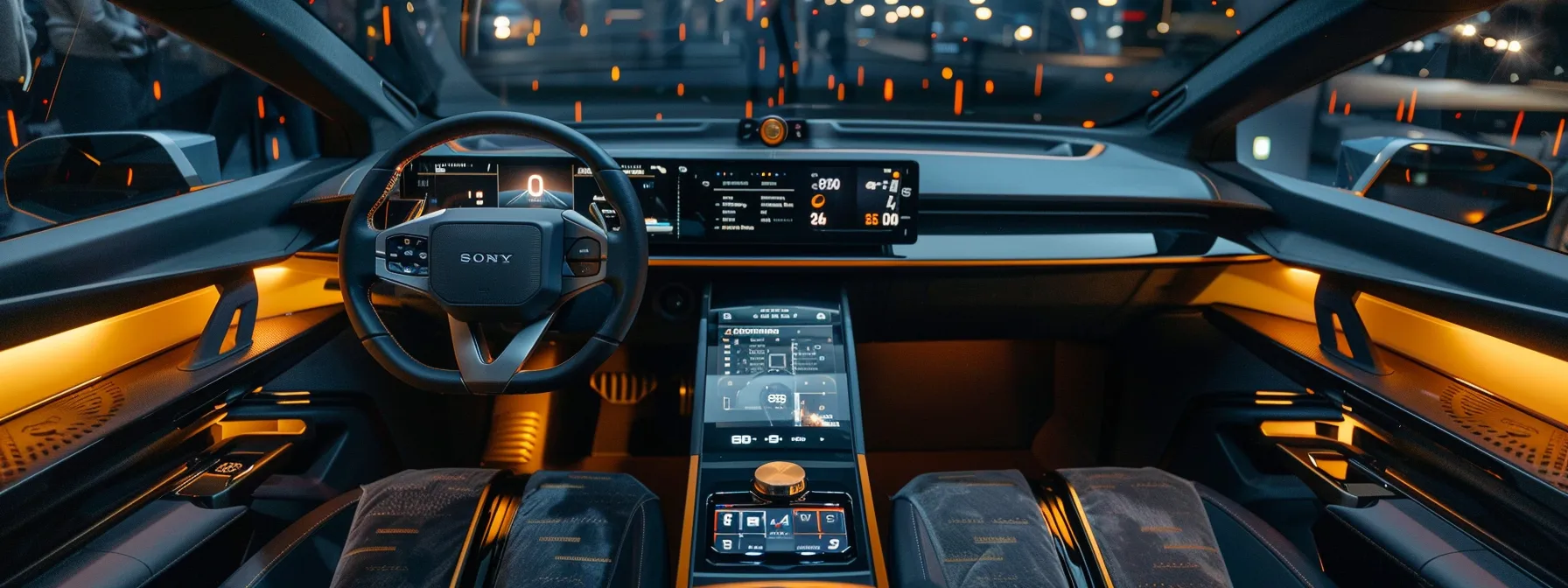
When considering new vs used cars, I find that technology and safety features are crucial factors. New cars often offer the latest tech and advanced safety features, enhancing my driving experience. Meanwhile, used cars can be upgraded with modern technology, providing a practical solution for budget-conscious buyers. I’ll explore how these elements can influence my decisions and address my future needs.
Accessing the Latest Tech in New Cars
When I think about the latest tech in new cars, I’m often impressed by innovative features that enhance both convenience and safety. Modern vehicles come equipped with advanced driver-assistance systems, like lane departure warnings and adaptive cruise control, which can significantly improve my driving experience. These high-tech tools help reduce the risk of accidents, making my time on the road safer and more enjoyable.
Additionally, many new cars offer smartphone integration, allowing me to access essential apps and navigation tools seamlessly. This connectivity makes it easier for me to stay focused while driving, minimizing distractions. The opportunity to enjoy up-to-date technology is a compelling reason I often lean towards purchasing a new vehicle, especially when considering my daily driving needs:
- Access to advanced safety features.
- Integration with smartphones and apps.
- Enhanced driving experience and convenience.
Comparing Safety Features Between New and Used Models
When I compare safety features between new and used cars, I notice that new models typically come equipped with the latest advancements in safety technology. Features like automatic emergency braking, blind-spot monitoring, and lane-keeping assist have become standard in many new vehicles, providing an added layer of protection that can significantly enhance my driving experience. If safety is a top priority, investing in a new car allows me to benefit from innovations designed to help prevent accidents and keep me and my passengers secure.
On the other hand, many used cars, especially from just a few years ago, may still include valuable safety features, though they might lack the full suite of modern technology. I often find that vehicles built in the last five to seven years have made significant strides in safety, offering solid structures, airbag systems, and stability control. By researching the safety ratings of specific used models, I can make an informed decision and find a reliable vehicle that meets my safety needs while remaining budget-friendly.
Upgrading Used Cars With Modern Technology
When I consider upgrading a used car with modern technology, I find it can significantly enhance both convenience and safety. Many vehicles from just a few years back can support upgrades like a smartphone-compatible audio system or even a more advanced navigation system. These additions not only make my driving experience more enjoyable but also help keep me connected and focused on the road.
I’ve learned that some used cars can be retrofitted with driver-assistance features such as rearview cameras or blind-spot monitoring, which were not always available in older models. This upgrade allows me to enjoy increased safety without the need to invest in a brand-new vehicle. By doing a bit of research and consulting with professionals, I can find ways to incorporate these modern features, ensuring that my used car meets my preferences and addresses my safety needs effectively.
Considering Future Needs and Advancements
When I think about considering future needs and advancements in technology, it helps me understand how quickly the automotive industry evolves. New cars often come equipped with the latest technology and safety features, which can be important if I plan on keeping my vehicle for several years. I want to invest in a car that will meet the demands of my lifestyle and keep me safe as advancements like autonomous driving technologies become more common.
On the other hand, when purchasing a used car, I still evaluate my options to ensure I’m not missing out on important safety features. Many newer used models still have solid technology and safety ratings, allowing me to access essential updates without the cost of a brand-new vehicle. By considering what safety advancements are coming down the line and how they might affect my driving experience, I can make a smarter choice for my future:
- Evaluate the latest technology in new cars for future relevance.
- Research advanced safety features available in newer used models.
- Consider how changes in driving technology may affect my needs.
After understanding the technology and safety features in a used car, it’s time to consider what truly matters for your needs. Making an informed decision can lead you to the right vehicle and a satisfying experience on the road ahead.
Making the Informed Decision

When I’m ready to make a car purchase, I focus on several key factors that guide my decision. First, I set a realistic budget to ensure I’m financially comfortable. Then, I prioritize the features and must-haves for my vehicle. Thorough test driving and inspecting are crucial steps in my process. Finally, I negotiate to secure the best deal possible. Each of these steps plays an important role in finding the right car for my needs.
Setting a Realistic Budget
When I sit down to set a realistic budget for buying a car, I consider my overall financial situation. It’s important for me to account for not just the upfront cost of the vehicle, but also the ongoing expenses like insurance, maintenance, and fuel. For instance, if I’m looking at a used car, I might find lower monthly payments, but I need to factor in additional costs that could arise from potential repairs. By evaluating my financial capabilities and estimating all costs involved, I can make a choice that fits my lifestyle without straining my budget.
Additionally, I often make a list of must-haves versus nice-to-haves for my car, which helps me prioritize what’s truly important. This approach not only keeps me on track financially but also aids in narrowing down my options between new and used cars. Setting a clear budget allows me to focus my search efficiently and understand which models meet my needs without overspending, ensuring I get the best value for my money:
- Evaluate overall financial situation, including ongoing expenses.
- Account for not just the purchase price, but also maintenance and insurance.
- Create a list of must-haves to prioritize needs.
- Stay focused to ensure a budget-friendly option is chosen.
Prioritizing Features and Must-Haves
When I’m in the market for a car, I first think about my lifestyle and requirements. I create a list of essential features, such as fuel efficiency, safety ratings, and technology integrations like Bluetooth or navigation. By prioritizing what I truly need, I streamline my search and stay focused on vehicles that fit both my preferences and budget.
It helps me to separate must-haves from nice-to-haves. For example, while heated seats might seem appealing, safety features like airbags and anti-lock brakes take precedence. This approach ensures I’m investing in a car that not only meets my expectations but also provides value for money in the long run. Here are some common must-haves I consider when evaluating options:
- Strong fuel efficiency to save on gas costs.
- High safety ratings for peace of mind.
- Reliable technology integrations for convenience.
- Spaciousness to accommodate passengers and cargo.
- Good warranty options to reduce future expenses.
Test Driving and Inspecting Vehicles Thoroughly
When I’m considering a used or new car, test driving is one of the most important steps I take. It gives me a real feel for the vehicle, allowing me to assess everything from its handling to comfort and noise levels. During the drive, I always pay attention to how the car accelerates, the braking response, and whether it meets my expectations for ride quality. This firsthand experience helps me determine if the car truly fits my lifestyle and driving style.
Inspecting a vehicle thoroughly is another essential part of my decision-making process. I make it a point to check for any signs of wear and tear, both inside and outside, and examine the engine and tires. For used cars, I often request a vehicle history report to uncover any potential red flags or accidents in its past. By taking the time to test drive and inspect thoroughly, I feel more confident in making a sound investment and selecting the perfect car for my needs.
Negotiating to Get the Best Deal
When it comes to negotiating to get the best deal on a new or used car, I always start by doing my homework. Before heading to the dealership, I research the market value of the vehicles I’m interested in, using online tools and resources to find comparable sales. This not only gives me a solid understanding of the price range but also strengthens my position when discussing offers with dealers. Being informed about the vehicle‘s fair market value boosts my confidence and helps me navigate the negotiation process more effectively.
I also find it helpful to approach negotiations with a friendly yet assertive attitude. When I’m talking to salespeople, I emphasize my budget and explain that I’m considering several options before making a decision. By maintaining open communication, I encourage them to work with me on pricing and potentially throw in additional perks, like warranties or maintenance packages. This strategy not only promotes a positive environment but often leads to better deals, ensuring I leave with a vehicle that genuinely meets my needs without breaking the bank.
Conclusion
Evaluating new versus used cars is essential for making an informed purchasing decision that aligns with your financial situation and driving needs. Understanding factors like initial costs, long-term value, warranty options, and technology enhancements can help guide you toward the right choice. By carefully assessing your personal requirements and budget, you can maximize your investment and enjoy a vehicle that meets your expectations. Ultimately, this decision plays a significant role in your overall driving experience and financial well-being, making it crucial to weigh all aspects thoughtfully.
Recent Posts
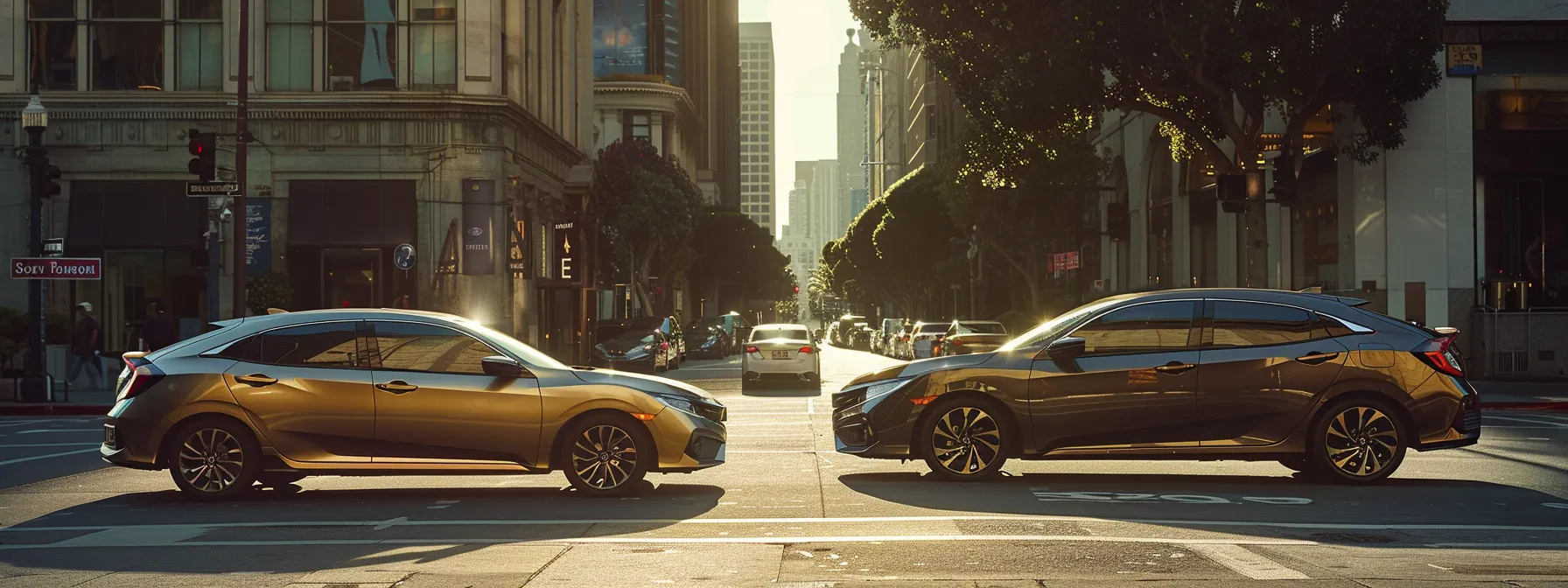
Honda Civic vs Toyota Corolla: Ultimate MPG Comparison
Are you trying to decide between the Honda Civic and Toyota Corolla for your next car? Both models are known for their reliability and fuel efficiency, but which one truly offers better miles per gallon (MPG)? In this comparison, I’ll break down the official MPG ratings, real-world performance, and the engineering behind their fuel efficiency. [...]
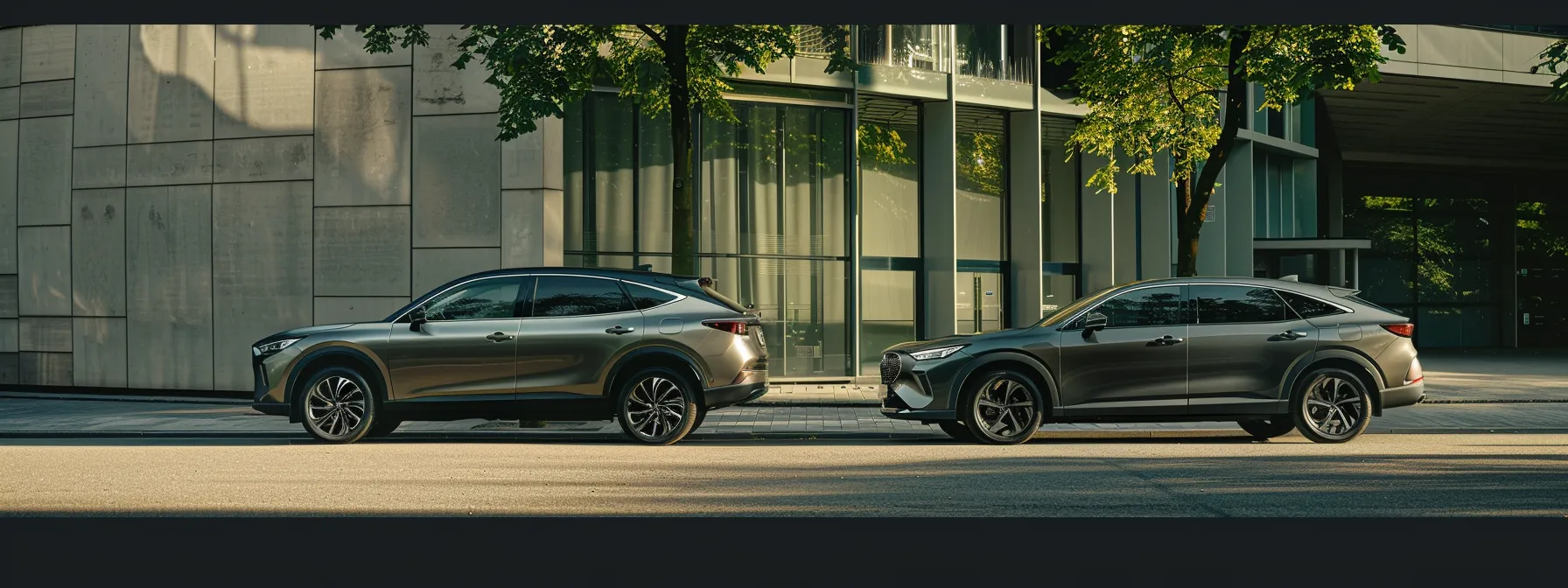
SUV vs Sedan: Analyzing Depreciation Rates Comparison
When choosing a men’s wedding ring, many people overlook titanium, assuming it lacks the elegance of platinum or gold. However, titanium men's rings offer unmatched durability, lightweight comfort, and a modern aesthetic that aligns with today’s wedding ring trends. In this article, you will discover the benefits of titanium wedding bands, including their hypoallergenic properties [...]
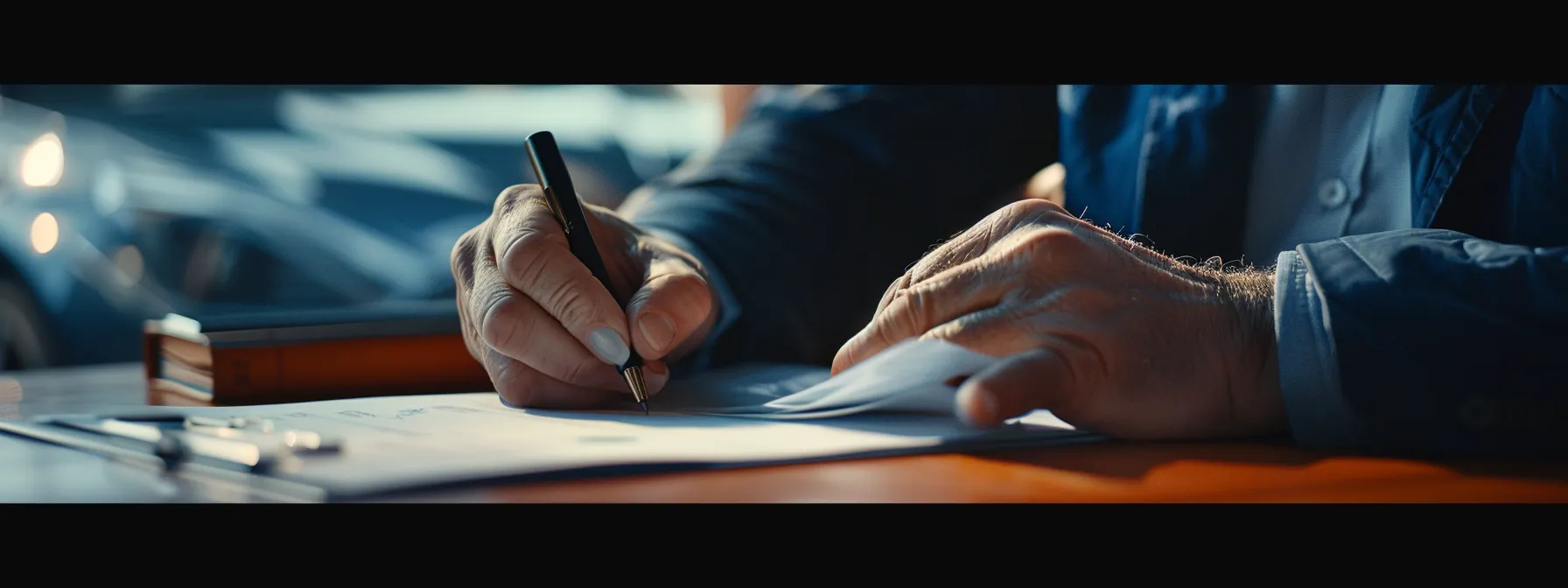
Guide to Successful Bad Credit Auto Financing
Are you struggling to finance your car due to bad credit? You're not alone. Many people face challenges when seeking auto financing, but there are options available. In this guide, I will cover how to understand your credit score, explore bad credit auto financing options, and navigate the application process successfully. By the end, you'll [...]
Find the car you need.
At Indy Auto, we are committed to providing you with the best solutions tailored to your driving needs. Whether you’re navigating city streets or cruising down the highway, our dedicated team ensures that you have access to top-quality vehicles, parts, and services that enhance your driving experience.
